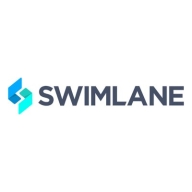

IBM Security QRadar and Swimlane are both cybersecurity solutions, with IBM Security QRadar standing out in analytics and threat detection, while Swimlane focuses on automation and efficiency.
Features: IBM Security QRadar excels in threat detection, log management, and analytics. It provides comprehensive security insights and has powerful custom workflows. Swimlane is strong in automation, offering customizable workflows that cater to specific business needs, improving response times and efficiency.
Room for Improvement: IBM Security QRadar could improve its complex deployment process. Enhancing its intuitive user interface and reducing setup time for third-party integrations would be beneficial. While Swimlane is user-friendly, improving AI integration, expanding alert functionalities, and further enhancing its current ticketing capabilities could add value.
Ease of Deployment and Customer Service: IBM Security QRadar requires a more involved deployment process, supported by a robust infrastructure. Swimlane is noted for quicker deployment and ease of integration, with hands-on customer service, providing a streamlined setup process ideal for organizations seeking swift implementation.
Pricing and ROI: IBM Security QRadar may involve higher initial costs due to its extensive features but delivers a strong ROI by enhancing security and reducing threats. Swimlane offers a cost-effective setup, quick time-to-value, and lower upfront investment, appealing to budget-conscious buyers seeking rapid returns.
| Product | Market Share (%) |
|---|---|
| IBM Security QRadar | 7.1% |
| Swimlane | 3.1% |
| Other | 89.8% |


| Company Size | Count |
|---|---|
| Small Business | 89 |
| Midsize Enterprise | 36 |
| Large Enterprise | 102 |
| Company Size | Count |
|---|---|
| Small Business | 2 |
| Midsize Enterprise | 1 |
| Large Enterprise | 5 |
IBM Security QRadar (recently acquired by Palo Alto Networks) is a security and analytics platform designed to defend against threats and scale security operations. This is done through integrated visibility, investigation, detection, and response. QRadar empowers security groups with actionable insights into high-priority threats by providing visibility into enterprise security data. Through centralized visibility, security teams and analysts can determine their security stance, which areas pose a potential threat, and which areas are critical. This will help streamline workflows by eliminating the need to pivot between tools.
IBM Security QRadar is built to address a wide range of security issues and can be easily scaled with minimal customization effort required. As data is ingested, QRadar administers automated, real-time security intelligence to swiftly and precisely discover and prioritize threats. The platform will issue alerts with actionable, rich context into developing threats. Security teams and analysts can then rapidly respond to minimize the attackers' strike. The solution will provide a complete view of activity in both cloud-based and on-premise environments as a large amount of data is ingested throughout the enterprise. Additionally, QRadar’s anomaly detection intelligence enables security teams to identify any user behavior changes that could be indicators of potential threats.
IBM QRadar Log Manager
To better help organizations protect themselves against potential security threats, attacks, and breaches, IBM QRadar Log Manager gathers, analyzes, preserves, and reports on security log events using QRadar Sense Analytics. All operating systems and applications, servers, devices, and applications are converted into searchable and actionable intelligent data. QRadar Log Manager then helps organizations meet compliance reporting and monitoring requirements, which can be further upgraded to QRadar SIEM for a more superior level of threat protection.
Some of QRadar Log Manager’s key features include:
Reviews from Real Users
IBM Security QRadar is a solution of choice among users because it provides a complete solution for security teams by integrating network analysis, log management, user behavior analytics, threat intelligence, and AI-powered investigations into a single solution. Users particularly like having a single window into their network and its ability to be used for larger enterprises.
Simon T., a cyber security services operations manager at an aerospace/defense firm, notes, "The most valuable thing about QRadar is that you have a single window into your network, SIEM, network flows, and risk management of your assets. If you use Splunk, for instance, then you still need a full packet capture solution, whereas the full packet capture solution is integrated within QRadar. Its application ecosystem makes it very powerful in terms of doing analysis."
A management executive at a security firm says, "What we like about QRadar and the models that IBM has, is it can go from a small-to-medium enterprise to a larger organization, and it gives you the same value."
Swimlane is a leader in security orchestration, automation and response (SOAR). By automating time-intensive, manual processes and operational workflows and delivering powerful, consolidated analytics, real time dashboards and reporting from across your security infrastructure, Swimlane maximizes the incident response capabilities of over-burdened and understaffed security operations.
Swimlane was founded to deliver scalable innovative and flexible security solutions to organizations struggling with alert fatigue, vendor proliferation and chronic staffing shortages. Swimlane is at the forefront of the growing market for security automation and orchestration solutions that automate and organize security processes in repeatable ways to get the most out of available resources and accelerate incident response.
We monitor all Security Orchestration Automation and Response (SOAR) reviews to prevent fraudulent reviews and keep review quality high. We do not post reviews by company employees or direct competitors. We validate each review for authenticity via cross-reference with LinkedIn, and personal follow-up with the reviewer when necessary.